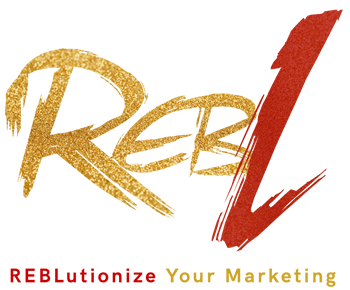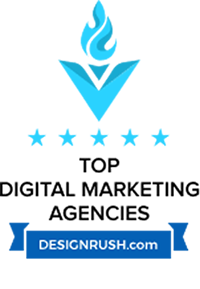Lead Magnet Creation Service: A Comprehensive Guide for Agencies
Struggling to attract leads? You’re not alone. Agencies need effective strategies. A lead magnet creation service can enhance your lead generation and increase client satisfaction. Discover how this approach can help scale your offerings.
Understanding Lead Magnets and Their Importance
What is a Lead Magnet?
A lead magnet is something you offer for free in exchange for a person’s contact information, like their email. Picture offering a free e-book or webinar in exchange for their email address. It’s a straightforward swap that helps grow your list of interested leads.
By offering high-quality content, you can connect with potential clients who are genuinely curious about what you offer. This not only opens up direct communication but also helps start new relationships with future clients.
Benefits of Using Lead Magnets
Why use lead magnets? They help you engage directly with your audience and improve the quality of your leads. Here’s how:
- Enhanced Engagement: Offering valuable content gets people interacting with your brand, fostering connections with potential clients.
- Attracts Qualified Leads: Those who opt-in are genuinely interested in your topics, ensuring your marketing focuses on those who matter most.
This targeted approach can boost conversion rates, making your client relationships stronger in the process.
Key Types of Lead Magnets for Agencies
Agencies can attract potential clients by using lead magnets that showcase their expertise and cater to client needs.
- eBooks: Offer in-depth insights on industry topics, like using social media for brand growth. eBooks build your agency’s credibility by sharing valuable information.
- Checklists: Provide clear, actionable steps, such as a social media marketing checklist. They help clients quickly grasp key tasks without being overwhelming.
- Infographics: Use visually appealing graphics to present data, such as marketing trends. Infographics simplify complex information and are shareable on social media.
Each format allows agencies to connect with clients through different learning styles, enhancing their engagement strategies.
How to Strategically Develop a Lead Magnet: 5 Key Steps
Crafting a compelling lead magnet starts with a clear plan that matches your business goals and caters to your audience’s needs. Follow these steps to build an effective strategy:
- Know Your Audience: Understand who you’re trying to reach. Identify their problems and how you can help. Your lead magnet should connect with them, making it a must-have.
- Align with Business Goals: Your lead magnet should not just grab attention but also support your business’s objectives. Whether you’re aiming for more awareness or boosting sales, ensure it fits your overall marketing strategy.
- Highlight the Value: Clearly explain why your lead magnet is beneficial. Outline the advantages and expected outcomes for your audience. Make sure it offers a solution or benefit that they value.
- Choose the Right Format: Pick a format that meets your audience’s preferences and your resources. Whether it’s an eBook, checklist, or infographic, ensure its engaging and accessible.
- Create Captivating Content: Develop content that not only informs but also captivates. Add interactive or visual elements to enhance user experience and make your lead magnet memorable.
By following these steps, you’ll craft a lead magnet strategy that captures genuine interest. This alignment boosts engagement and conversion rates, effectively supporting your marketing efforts.
Best Practices for Designing Engaging Lead Magnets
Creating engaging lead magnets requires focusing on appealing design. Visuals play a key role in capturing interest and encouraging conversion. Below are some practical design tips to make your lead magnets inviting and easy to digest.
Design Tips for Maximum Engagement
Consider the visual impact of your lead magnet. A captivating design can be the deciding factor for engagement. Use these tips:
- Use Eye-Catching Visuals: Integrate images and infographics to break up long text and add vibrancy. Ensure visuals are high-quality and relevant to strengthen your message.
- Choose Effective Colors: Colors influence emotions and can grab attention. Select a color palette that represents your brand and is appealing to the eye. Consistent colors create a memorable and professional look.
- Craft Concise Text: Make your writing direct and uncluttered. Use bullet points and short paragraphs to keep the text readable and engaging.
Layout and Readability
Well-structured layouts are vital for easy navigation. Keep these basics in mind:
- Use White Space: Don’t underestimate white space; it improves readability and highlights important points. It helps elements stand out without cluttering the page.
- Maintain Consistent Fonts: Choose legible fonts that fit your brand. Stick to a couple of fonts for headers and body text to ensure visual consistency.
Testing and Optimization
Testing helps identify what works best. Apply these straightforward methods:
Consider A/B testing different layouts, colors, and text to see what resonates with your audience. This practical approach means you can make informed changes, boosting engagement.
By applying these design tips, you’ll create lead magnets that not only engage but also enhance the user experience. You’ll transform curiosity into clear interest and action.
Integrating Lead Magnets into Your Marketing Strategy
Effectively incorporating lead magnets into your marketing strategy can significantly enhance lead capture and nurturing. Aligning them with your broader efforts boosts engagement and smoothly guides clients through their buying journey. Here’s how you can seamlessly include lead magnets in your tactics.
Digital Marketing Integration
- Use lead magnets to enhance your email campaigns by offering exclusive webinars or downloadable resources. These attract subscribers, growing your list with high-value leads.
- Capture contact details to customize communication with prospects. This helps provide content that meets their interests, boosting engagement and leading to conversions.
- Incorporate lead magnets into your social media efforts through engaging posts. Drive traffic to landing pages where users can access your magnet in exchange for their information.
- On your website, strategically place lead magnet forms, such as on your homepage or blog. Utilizing exit-intent popups also captures leads effectively before they leave.
- Explore pairing lead magnets with follow-up communications. This deepens client relationships and nurtures long-term brand loyalty.
Maximizing ROI from Lead Magnet Campaigns
Creating lead magnet campaigns isn’t just about attracting leads. It’s about ensuring those leads positively impact your bottom line. To maximize ROI, implement strategies that not only draw in potential customers but effectively convert and engage them.
Review and refine your lead magnet offerings regularly. Apply A/B testing to different versions to see which generates the highest conversion rates. Small tweaks can lead to significantly improved results by identifying what resonates with your audience.
Measurement and Analytics
To understand your lead magnet campaigns’ impact, focus on clear measurement and analytics. Track conversion rates to see how many take desired actions. Monitor engagement to assess how your audience interacts with content.
Use Google Analytics for website interactions and HubSpot or High Level for insights into email performance. These tools help you identify what’s working and where to make adjustments. This leads to informed decision-making and better ROI.
Common Pitfalls to Avoid
- Avoid overlooking the definition of your target audience. Lead magnets without a clear audience may lack relevance. Invest in market research to create detailed buyer personas.
- Ensure lead magnets align with overall marketing strategies to maintain consistent messaging. This coherence strengthens your brand across channels.
- Don’t forget to follow up with leads after the initial interaction. Automated email sequences can nurture leads, keeping your brand top-of-mind. By addressing these areas, your campaigns can yield better results and maximize ROI.
Final Takeaways
Choosing a “lead magnet creation service” can boost an agency’s lead generation efforts. These services simplify creating tools that draw in potential clients, becoming key components of any marketing strategy. They allow agencies to refine lead generation processes by not having to create every piece internally.
Agencies should adopt proactive strategies to enhance lead generation. This means regularly evaluating lead magnets and optimizing them using feedback and insights. Implement A/B testing and integrate lead magnets across all marketing platforms, like email and social media, to maximize reach and conversion.
For those aiming to fully utilize lead magnets, consider engaging experts in this field. Partnering with them can offer strategic insights, save time, and deliver more impactful results.
Key Takeaways:
- Get Professional Assistance: Use a lead magnet creation service to save time and improve quality.
- Prioritize Optimization: Continuously refine lead magnets through analytics and testing for best results.
- Maintain Integration: Ensure lead magnets are part of the entire marketing strategy for better engagement.
These insights can help guide your agency toward better lead generation. It’s time to take action and see how professional services can strengthen your strategy.





